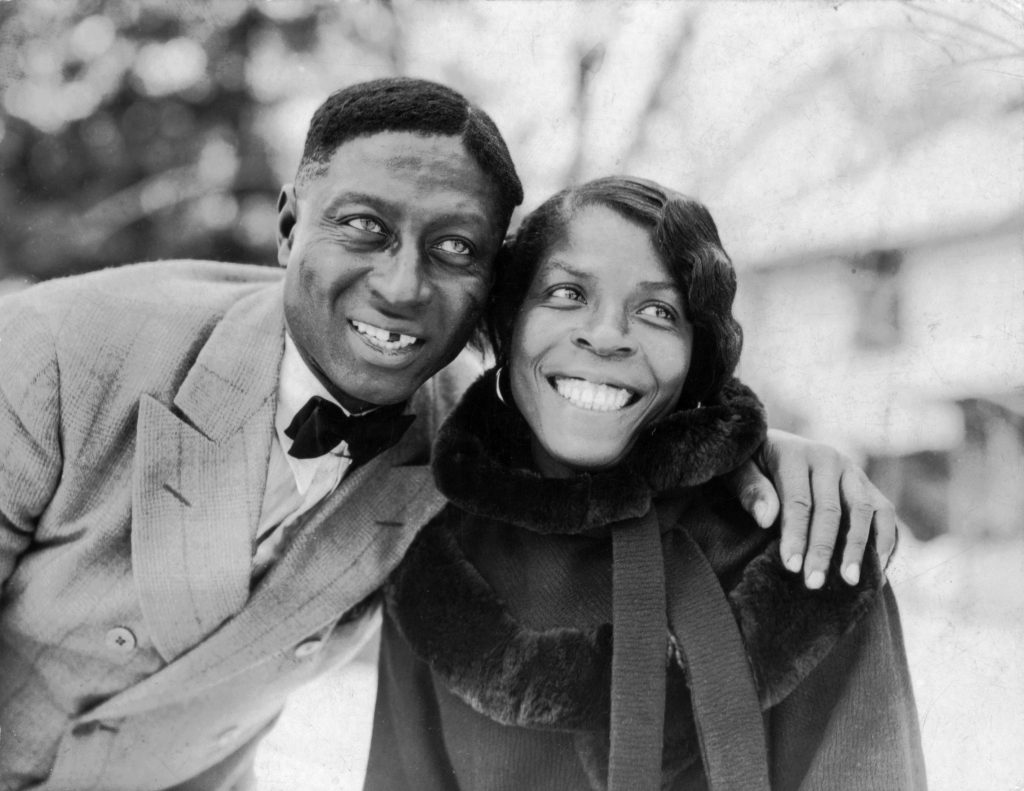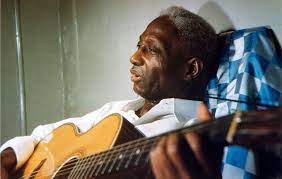Lead Belly: Blues Legend.
“Home of the brave, land of the free
I don’t wanna be mistreated by any bourgeoisie (Lead Belly). “
This feature is a dip into the past to bring a name to attention that everyone should know, but too few do. He has a story that is part gangster movie, part genius, and we are talking about one of the most influential blues men and guitarists of the early twentieth century. George Harrison commented once that there would have been no Lonnie Donegan without Lead Belly, and no Beatles without Lonnie Donegan. Bob Dylan cited him as an influence in the song “Cotton Fields,” and Kurt Cobain worked to keep Lead Belly’s music alive. Nirvana’s performance of “Where Did You Sleep Last Night” at a televised concert that was later released as MTV Unplugged in New York introduced some rock fans to Lead Belly. In a break before the song starts, Cobain calls Lead Belly his favourite performer and talks about how he tried to get David Geffen to buy Lead Belly’s guitar for him (for $500,000). Also, it’s interesting that Cobain said that Lead Belly was a big influence on Nirvana’s sound.
So who was this man who managed to gain such applause from Harrison, Clapton, Dylan and Cobain? The story of his life is incredible to tell, and this feature you will hopefully find interesting and a little different. That is what we are here for!
He was born in 1888 or 1889 on a plantation near Louisiana. He was named Huddie William Ledbetter, and he had played music since he was a child. He played the accordion, the 6-string and, more often, the 12-string guitar, the bass, and the harmonica. He moved around a lot and learned songs from people who taught them to him. He played music on the road with Blind Lemon Jefferson for a while. By 1903, Huddie had already made a name for himself as a singer and guitarist. He played for people in St. Paul’s Bottoms, which is known as the red-light district in Shreveport. After hearing a lot of different kinds of music on Shreveport’s Fannin Street, a row of saloons, brothels, and dance halls in the Bottoms, he started to make his own style .In 1918, he was sent to prison in Texas for the murder of his cousin, Will Stafford, during a dispute over a woman (he probably acquired his stage name Lead Belly at this time). Tradition says that he got out of jail early in 1925 because he sang a song for the governor of Texas when he came to visit the prison.
“On a Monday I was arrested,
On a Tuesday, I was locked up in jail,
On a Wednesday, my trial was attested,
On a Thursday, nobody wouldn’t go to my bail.
Yes, I’m almost done,
Yes, I’m almost done…(Lead Belly)”
Ledbetter spent a lot of time in prison and jail in Louisiana between 1915 and 1939. He did this for a number of different crimes. After going back to a life of wandering, Lead Belly was found guilty of trying to kill someone in 1930 and sent to the Angola, Louisiana, prison farm. Folklorists John and Alan Lomax, who were collecting songs for the Library of Congress, “found” him there. Lead Belly was freed in 1934 after the Lomaxes led a campaign to do so. He then went on a concert tour of eastern colleges. After that, the Lomaxes put out 48 of his songs along with comments about them (Negro Folk Songs as Sung by Lead Belly, 1936). This was thirty years after he first started making music. As part of a project to save traditional music for the Library of Congress, they were recording different kinds of local music in the South. During the Great Depression, there were many projects like this one.
The picture below is with Martha Ledbetter and its attributed to him that he once remarked how his wife was one half of him and his guitar the other!

Lead Belly had a talent for folk and gospel, but made a name for the blues. In 1937, he moved to New York City. He had trouble making enough money, and he went to jail again in 1939–1940 for assault. After he was freed, he briefly worked with Woody Guthrie, Sonny Terry, Brownie McGhee, and others as the Headline Singers. He also sang on the radio and, in 1945, was in a short film. In 1949, not long before he died, he played in Paris.
Lead Belly was a songwriter. He wrote “Cotton Fields,” a song often copied and sung to this day. It is one of those melodies within the subconscious of so many. It has been covered by the Beach Boys, Credence Clearwater Revival, and Elton John.
“It was back in Louisiana
Just about a mile from Texarkana
In them old cottonfields back home…”
Lead Belly did get into the studio, and there is a legacy of recordings available. Lead Belly made a record for RCA Victor in 1940. At the time, RCA Victor was one of the biggest record companies. On June 15 and 17, these sessions took place in California. The Golden Gate Quartet played some of the songs during these sessions. Victor Records put out an album called The Midnight Special and Other Southern Prison Songs, which was made up of songs that were recorded. Alan Lomax wrote a lot of notes and song lyrics and put them on sheets that came with the album. Charles Wolfe and Kip Lornell said, “It was well recorded, well promoted, and well documented.” The album lived up to its reputation as a milestone in African American folk music. His recordings show that he was good at a wide range of song styles and had a great memory.
He knew more than 500 songs. His rhythmic guitar playing and one-of-a-kind vocal accents make his work both educational and interesting.Lead Belly called himself the “King of the Twelve-String Guitar,” and while he did play other instruments, including the accordion, the image of him performing is almost always with his oversized Stella twelve-string. Due to the instrument’s somewhat greater scale length and the additional tension of the six extra strings, a trapeze-style tailpiece was required to prevent the bridge from lifting. The tuners and ladder bracing were slotted.
Most of the time, Lead Belly used finger picks; when he strummed, he occasionally used a thumb pick to generate strolling bass lines that have been called “tricky” and “inventive.” Many of his recordings have a piano-like sound because of this method mixed with low tunings and thick strings. Scholars believe he drew equally from barrelhouse piano and the Mexican Bajo Sexto, a sort of guitar he encountered in Texas and Louisiana, when composing and performing much of his guitar music.
Both the Blues Hall of Fame (1986) and the Rock & Roll Hall of Fame (2000) recognised Lead Belly’s contributions to the music industry (1988). The Smithsonian Museum put a collection of 120 of his songs together, available on digital download.
In this magazine we will promote new talent and get behind artists we like. But we all stand on the shoulders of giants. Maybe no-one out there wants to read about Lead Belly any more, (although if you want more the link here connects to a great book on the man) but that would be a crime. He was a bad lad, but he made some wonderful, wonderful music and deserves the recognition.
By Mark Craster-Chambers
&
Benny (the Ball) Benson.




I was so surprised to read this here. Lead Belly is an absolute great and part of the black lives that made the blues music their own. Thank you Benny (The Ball) Benson and Mark Craster-Chambers for helping keep his name alive. I will follow your magazine now.